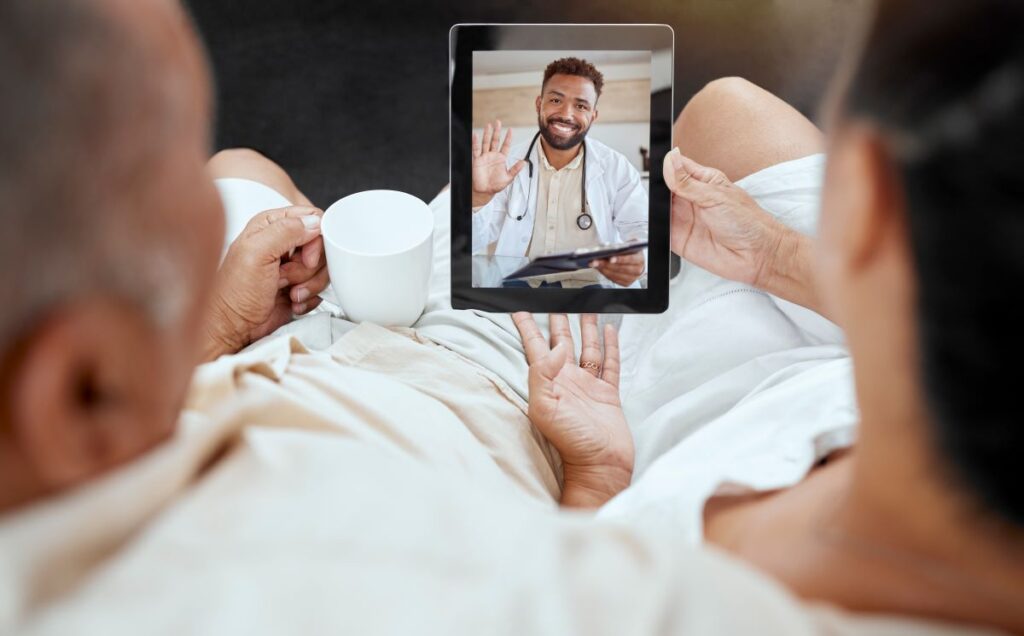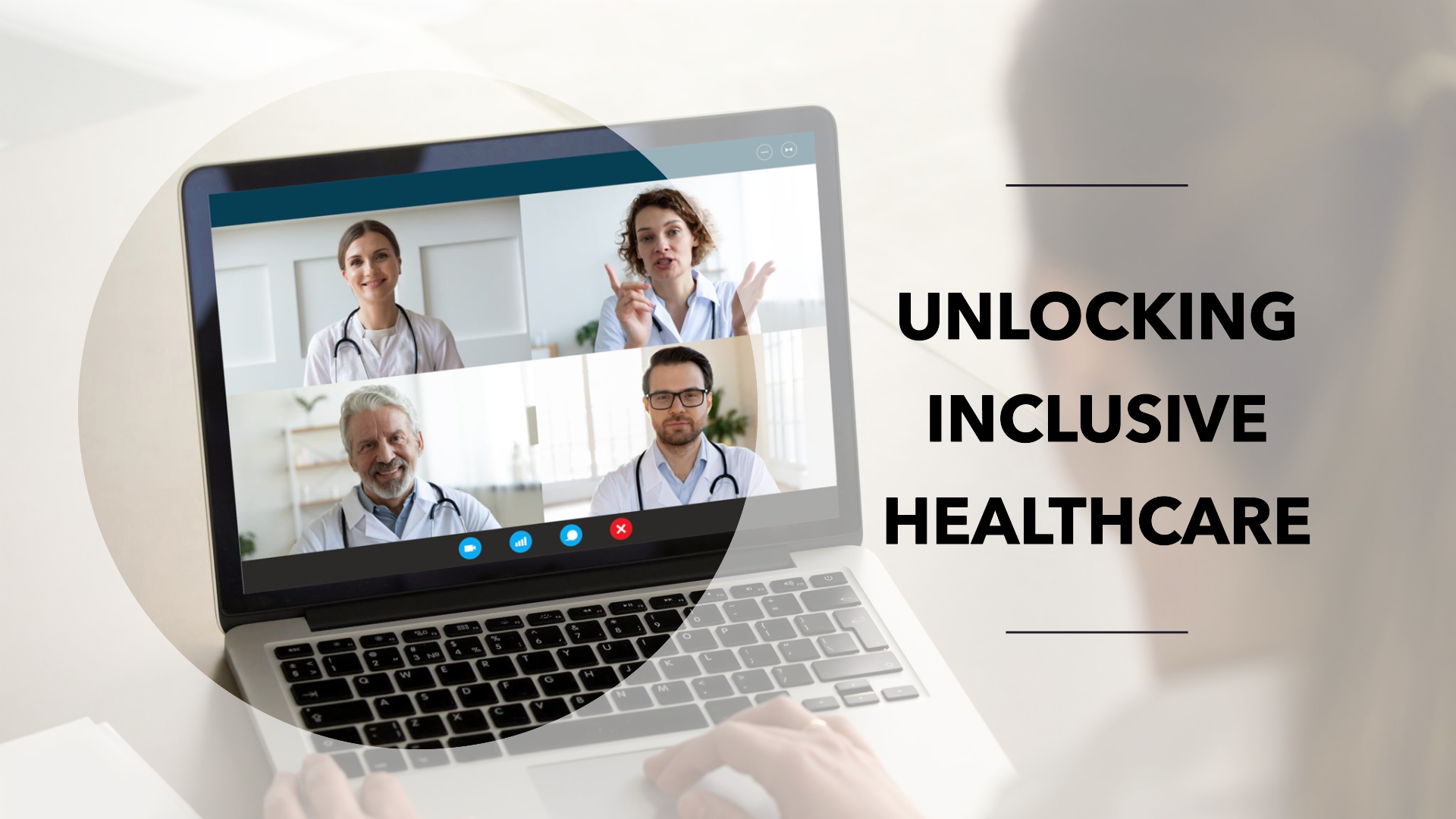Telemedicine for Aging Adults: Revolutionizing Healthcare for Seniors
The landscape of healthcare is evolving rapidly, and telemedicine for aging adults has emerged as a transformative solution.
The concept of telemedicine for aging adults brings forth a transformative approach to healthcare, offering convenience, accessibility, and personalized care tailored to the unique needs of older individuals. This comprehensive guide delves into the world of telemedicine for aging adults, shedding light on its benefits, types of services, technological requirements, etiquette considerations, remote monitoring devices, mental health support, medication management, insurance coverage, challenges, and key considerations.
Telemedicine has revolutionized healthcare delivery, ushering in a new era of accessibility and connectivity for aging adults navigating the complexities of the healthcare system. By embracing telemedicine for aging adults, healthcare providers can bridge the gap between traditional care models and innovative remote solutions, ensuring that older individuals receive the care they need in a convenient and efficient manner.
Benefits of Telemedicine for Aging Adults
- Enhanced Access to Healthcare: Telemedicine breaks down geographical barriers, enabling aging adults to connect with healthcare providers regardless of their location. This enhanced access ensures that older individuals receive timely medical attention and support, promoting better health outcomes.
- Convenience and Flexibility: Aging adults can now access healthcare services from the comfort of their homes, eliminating the need for lengthy commutes and reducing wait times. Telemedicine offers the flexibility to schedule appointments at convenient times, accommodating the unique needs of older individuals.
- Improved Quality of Care: By leveraging telemedicine, aging adults can benefit from regular health monitoring, timely consultations, and proactive management of chronic conditions. This proactive approach to care enhances the overall quality of life for older individuals, empowering them to take charge of their health.
- Effective Communication and Coordination: Telemedicine facilitates seamless communication between aging adults, caregivers, and healthcare providers, fostering collaboration and coordinated care. This enhanced communication ensures that older individuals receive comprehensive and personalized healthcare services.
Types of Telemedicine Services for Aging Adults
- Virtual Consultations: Aging adults can engage in virtual consultations with healthcare providers, allowing for real-time discussions about health concerns, treatment plans, and follow-up care. Virtual consultations offer a convenient and efficient way for older individuals to access medical expertise.
- Remote Monitoring: Through remote monitoring devices and health trackers, aging adults can track vital signs, medication adherence, and health indicators from the comfort of their homes. Remote monitoring enables healthcare providers to remotely assess and manage the health of older individuals.
- Telehealth Apps: Mobile applications provide aging adults with a user-friendly platform to access healthcare services, schedule appointments, and communicate with their healthcare team. Telehealth apps offer a streamlined approach to managing health needs and accessing medical information.
- Telepsychiatry and Mental Health Support: Aging adults can receive mental health support through telepsychiatry services, including therapy sessions, counseling, and psychiatric consultations. Telepsychiatry plays a crucial role in addressing mental health challenges faced by older individuals.
Technology Requirements for Telemedicine for Aging Adults
- Smartphones and Tablets: Aging adults can utilize smartphones and tablets to access telemedicine platforms, participate in virtual consultations, and engage with healthcare providers. The user-friendly interface of mobile devices ensures seamless communication and interaction.
- Computers and Laptops: For those who prefer larger screens and keyboards, computers and laptops serve as viable options for accessing telemedicine services. Older individuals can navigate telemedicine platforms effectively using desktop devices.
- Internet Connectivity: Stable internet connectivity is essential for aging adults to engage in telemedicine services, ensuring clear audio and video communication during virtual consultations. Reliable internet access enables seamless interaction with healthcare providers.

Telemedicine Etiquette for Aging Adults
- Preparation for Appointments: Aging adults should prepare for telemedicine appointments by compiling a list of questions, medications, and health concerns to discuss with their healthcare provider. Adequate preparation ensures that older individuals make the most of their virtual consultations.
- Technical Setup and Testing: It is crucial for aging adults to test their audio and video settings before telemedicine appointments, ensuring that communication channels are clear and functional. Technical setup plays a vital role in facilitating effective virtual interactions.
- Privacy and Confidentiality: Aging adults should prioritize privacy during telemedicine appointments by selecting a quiet and private location for consultations. Maintaining confidentiality and creating a conducive environment for virtual interactions is key to a successful telemedicine experience.
Remote Monitoring Devices for Aging Adults
- Wearable Health Trackers: Health trackers and wearable devices enable aging adults to monitor vital signs, activity levels, and health metrics in real time. These devices provide valuable data for healthcare providers to assess and manage the health of older individuals remotely.
- Blood Pressure Monitors: Aging adults can use home blood pressure monitors to track blood pressure readings and share this information with their healthcare team. Regular monitoring of blood pressure enables proactive management of cardiovascular health.
- Glucose Meters: For aging adults with diabetes, glucose meters offer a convenient way to monitor blood sugar levels and manage the condition effectively. Monitoring blood glucose levels at home empowers older individuals to take control of their health.
Telemedicine and Mental Health Support for Aging Adults
- Virtual Therapy Sessions: Aging adults can access mental health support through virtual therapy sessions, counseling services, and support groups. Telemedicine offers a safe and confidential platform for addressing mental health concerns and promoting emotional well-being.
- Psychiatric Consultations: Telepsychiatry services enable aging adults to receive psychiatric evaluations, medication management, and treatment planning from the comfort of their homes. Access to psychiatric care plays a crucial role in supporting the mental health needs of older individuals.
Medication Management through Telemedicine for Aging Adults
- Prescription Refills and Reviews: Aging adults can request prescription refills and medication reviews through telemedicine platforms, ensuring continuity of care and effective management of medications. Telemedicine simplifies the process of medication management for older individuals.
- Adherence Monitoring: Remote monitoring devices and telehealth platforms assist aging adults in tracking medication adherence, receiving reminders, and accessing support for medication-related concerns. Monitoring medication adherence promotes medication safety and treatment efficacy.
Insurance Coverage for Telemedicine Services for Aging Adults
- Medicare Coverage: Medicare offers coverage for telemedicine services for aging adults, including virtual consultations, remote monitoring, and mental health support. Understanding Medicare coverage guidelines is essential for older individuals seeking to access telehealth services.
- Private Insurance Plans: Many private insurance plans provide coverage for telemedicine services for aging adults, offering reimbursement for virtual appointments and remote monitoring devices. Checking insurance policies and coverage details ensures that older individuals receive the benefits they are entitled to.
Challenges and Considerations in Telemedicine for Aging Adults
- Technology Literacy: Aging adults may face challenges related to technology literacy when using telemedicine services, requiring additional support and guidance to navigate virtual platforms effectively.
- Privacy and Security Concerns: Ensuring the privacy and security of health information exchanged during telemedicine appointments is crucial for aging adults and healthcare providers. Implementing robust data protection measures safeguards sensitive health data.
- Communication and Trust Building: Establishing clear communication channels and fostering trust between aging adults and healthcare providers is essential for successful telemedicine interactions. Effective communication enhances the quality of care and promotes a positive patient-provider relationship.
- Cultural Sensitivity and Accessibility: Healthcare providers should maintain cultural sensitivity and ensure accessibility for aging adults from diverse backgrounds to deliver inclusive and equitable telemedicine services.
Leveraging Telemedicine for Aging Adults: A Path to Sustainable Healthcare
In the evolving landscape of healthcare, telemedicine has emerged as a vital tool in enhancing access, improving quality of care, and empowering aging adults to take control of their health journey. As we delve deeper into the realm of telemedicine for aging adults, it becomes evident that this innovative approach holds the key to sustainable healthcare solutions tailored to the specific needs of older individuals. This section explores the transformative impact of telemedicine on chronic disease management and preventive care for aging adults, highlighting its role in promoting long-term health and well-being.

Chronic Disease Management through Telemedicine
Chronic conditions such as diabetes, hypertension, heart disease, and arthritis are prevalent among aging adults, requiring ongoing management, monitoring, and intervention to prevent complications and enhance quality of life. Telemedicine plays a crucial role in chronic disease management by providing older individuals with access to regular consultations, remote monitoring tools, and personalized care plans from healthcare providers.
- Remote Monitoring Devices for Chronic Conditions: Aging adults with chronic conditions can benefit from remote monitoring devices that track vital signs, blood glucose levels, blood pressure readings, and medication adherence. These devices enable healthcare providers to monitor disease progression, adjust treatment plans accordingly, and intervene proactively to prevent exacerbations.
- Care Coordination and Remote Consultations: Telemedicine facilitates seamless care coordination among healthcare providers, specialists, and older individuals, ensuring that treatment plans are cohesive and comprehensive. Through remote consultations, aging adults can discuss symptoms, treatment efficacy, and concerns with their healthcare team without the need for in-person visits.
- Medication Management and Adherence Support: Telemedicine platforms offer features that support medication management for aging adults, including prescription refills, dosage adjustments, and medication adherence reminders. By incorporating medication management tools into telehealth services, older individuals can maintain treatment compliance and optimize health outcomes.
Preventive Care and Wellness Programs for Aging Adults
Preventive care plays a crucial role in maintaining optimal health and well-being for aging adults, focusing on disease prevention, health promotion, and early detection of potential health issues. Telemedicine serves as a valuable resource for delivering preventive care and wellness programs to older individuals, empowering them to proactively manage their health and reduce the risk of chronic conditions.
- Health Screenings and Risk Assessments: Telemedicine platforms offer virtual health screenings, risk assessments, and preventive care guidelines tailored to the specific needs of aging adults. These screenings help identify risk factors for chronic conditions, assess overall health status, and guide older individuals in making informed decisions about their well-being.
- Nutritional Counseling and Lifestyle Interventions: Aging adults can access nutritional counseling, lifestyle interventions, and wellness programs through telemedicine services, promoting healthy eating habits, physical activity, and stress management. These interventions support holistic well-being and empower older individuals to adopt sustainable health practices.
- Fall Prevention and Home Safety Assessments: Telemedicine programs address fall prevention strategies, home safety assessments, and mobility exercises tailored to aging adults, reducing the risk of falls, injuries, and accidents. By promoting a safe and supportive living environment, telemedicine contributes to improved quality of life and independence for older individuals.
Empowering Aging Adults Through Telemedicine
In conclusion, telemedicine for aging adults represents a transformative approach to healthcare delivery that empowers older individuals to navigate the complexities of aging with confidence, resilience, and dignity. By leveraging telemedicine for chronic disease management and preventive care, aging adults can proactively engage with their health, access personalized interventions, and cultivate a sense of empowerment in managing their well-being. As telemedicine continues to evolve and innovate, it holds the promise of sustainable healthcare solutions for aging adults, fostering a future where health equity, accessibility, and quality of care intersect to create a world where aging is synonymous with vitality, resilience, and flourishing well-being.
Conclusion
Telemedicine for aging adults represents a pivotal shift in healthcare delivery, offering a gateway to personalized, accessible, and efficient medical care tailored to the unique needs of older individuals. By embracing telemedicine, aging adults can navigate the healthcare landscape with ease, ensuring that their health and well-being remain a top priority in an era of digital innovation. As telemedicine continues to evolve and expand, addressing challenges, enhancing user-friendly technology, and prioritizing patient-centered care are paramount to empowering aging adults in their healthcare journey. Embracing telemedicine for aging adults opens new frontiers for enhanced health outcomes, independence, and connectivity, steering the healthcare landscape towards a brighter and more inclusive future.
In conclusion, telemedicine for aging adults offers a beacon of hope in the quest for accessible, compassionate, and tailored healthcare services for older individuals. By embracing telemedicine, aging adults and healthcare providers alike can embark on a journey towards improved health outcomes, enhanced quality of life, and holistic well-being in a world where innovation and compassion intersect to redefine the future of healthcare.
Thank you for joining us on this journey through the latest in digital health and health wearables news. To stay in the know and explore further, here are some key links for you:
- Digital Salutem Website: Visit Digital Salutem for your weekly dose of digital health news and insights.
- Healthcare Uncomplicated on YouTube: Delve into the topics discussed in this article and more on our YouTube Channel, Healthcare Uncomplicated.
- Digital Salutem Podcast: Tune in to our thought-provoking discussions on the Digital Salutem Podcast. Uncover deeper insights into the world of healthcare transformation on Soundcloud and Spotify
- Share Your Thoughts: We value your feedback! Share your opinions on digital health, patient care, wearables, or anything, comment here or emailing us at info@digitalsalutem.com
- Connect with Us: For inquiries about Digital Healthcare Transformation, Healthcare organizational growth, or Healthcare brand positioning, reach out to us at +44 (0)1273 458590.
Your engagement fuels the ongoing dialogue shaping the future of healthcare. Let’s continue this transformative journey together!





